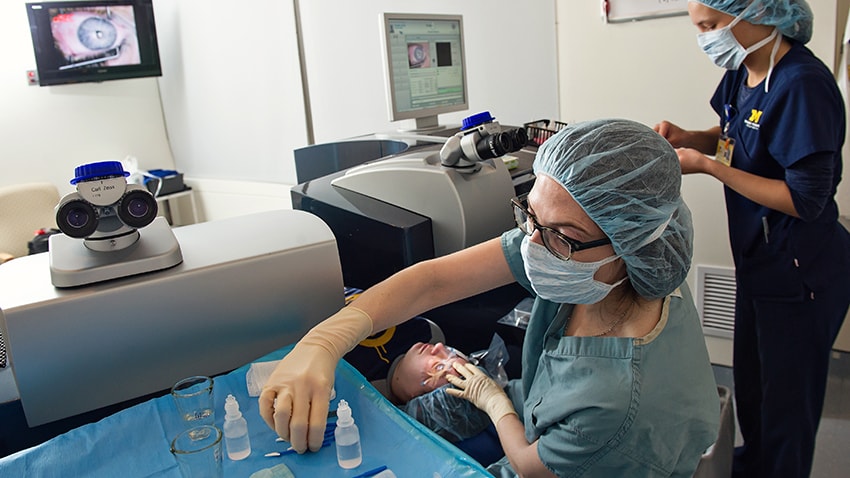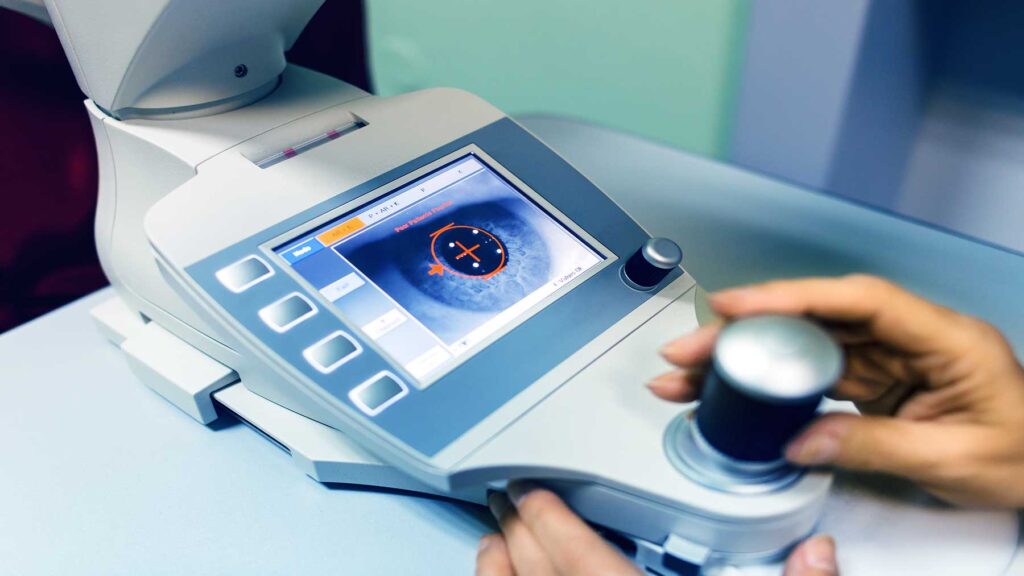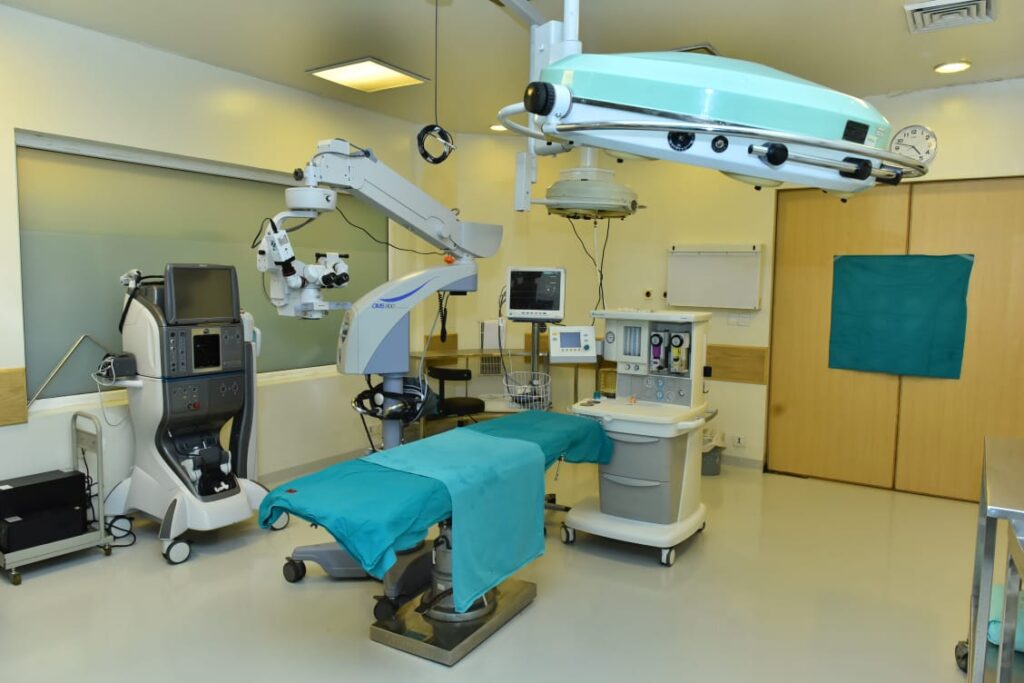In today’s fast-paced world, having clear vision is essential for performing everyday tasks. Whether it’s reading a book, driving a car, or simply enjoying the beauty of the world around us, our eyesight plays a crucial role. Fortunately, advancements in medical technology have made it possible to achieve clarity through state-of-the-art laser eye surgery techniques. This article will explore the basics of laser eye surgery, the evolution of these techniques, the benefits they offer, and the risks and considerations to keep in mind. We’ll also touch on the future of laser eye surgery, including emerging technologies and the role of artificial intelligence. So let’s dive in and discover how laser eye surgery can transform your life.
Understanding the Basics of Laser Eye Surgery
When it comes to laser eye surgery Sydney, understanding the science behind it is key to making an informed decision. The process involves reshaping the cornea, the clear front part of the eye, using a laser. By adjusting the shape of the cornea, the laser can correct refractive errors such as nearsightedness, farsightedness, and astigmatism. This ultimately improves vision and reduces the dependency on glasses or contact lenses.
There are different types of laser eye surgery, each tailored to specific conditions. Let’s explore these techniques in more detail.
The Science Behind Laser Eye Surgery
Laser eye surgery works by using a cool ultraviolet light beam to remove tiny amounts of corneal tissue, reshaping the front surface of the eye to correct vision problems. This procedure is highly precise and allows for customized treatment based on individual needs. The laser used in these surgeries is called an excimer laser, known for its accuracy and ability to remove tissue without generating heat.

The entire process is guided by computer technology, ensuring that the laser precisely targets the cornea. By reshaping the cornea to the desired curvature, light entering the eye can be focused more accurately on the retina, resulting in clearer vision. Click here to get about the transformative impact of laser eye surgery.
But how does the laser actually reshape the cornea? When the laser beam comes into contact with the cornea, it breaks the molecular bonds of the tissue, causing it to vaporize. This controlled removal of tissue allows the surgeon to sculpt the cornea to the desired shape, correcting the refractive errors that were causing vision problems.
Different Types of Laser Eye Surgery
While LASIK (Laser-Assisted In Situ Keratomileusis) is the most well-known and widely performed laser eye surgery, it’s not the only option available. Other techniques include PRK (Photorefractive Keratectomy) and SMILE (Small Incision Lenticule Extraction).
PRK involves removing a thin layer of the cornea before reshaping it with the laser, while SMILE uses a laser to create a small disc-shaped piece of tissue within the cornea. Each technique has its advantages and may be recommended based on factors such as corneal thickness and the individual’s specific needs.
Another technique that has gained popularity in recent years is called Wavefront-guided LASIK. This advanced procedure uses a detailed map of the patient’s eye, created by measuring the way light travels through the eye, to guide the laser in reshaping the cornea. By taking into account the unique imperfections of each individual’s eye, Wavefront-guided LASIK can provide even more precise and personalized vision correction.
It’s important to consult with an experienced ophthalmologist to determine the most suitable type of laser eye surgery for your specific needs. They will evaluate your eye health, vision prescription, and other factors to recommend the best course of action.
The Evolution of Laser Eye Surgery Techniques
Over the years, laser eye surgery techniques have undergone significant advancements. Early methods had certain limitations, but with continuous research and development, modern techniques have revolutionized the field.
Early Methods and Their Limitations
In the early days of laser eye surgery, a technique called PRK (Photorefractive Keratectomy) was commonly used. PRK involved removing the outer layer of the cornea, known as the epithelium, before reshaping the underlying corneal tissue with a laser. While effective in correcting vision, PRK had a longer recovery time compared to LASIK and a higher risk of corneal haze. Corneal haze refers to a clouding of the cornea, which can temporarily affect vision quality. This was a concern for patients who desired a quick recovery and minimal post-operative complications.
However, advancements in technology and surgical techniques have addressed these limitations. The introduction of LASIK (Laser-Assisted In Situ Keratomileusis) brought about a significant breakthrough in laser eye surgery. LASIK involves creating a thin flap on the cornea, which is then lifted to allow the laser to reshape the corneal tissue. This flap is then repositioned, resulting in faster healing and minimal discomfort for the patient. The creation of the corneal flap also reduced the risk of corneal haze, making LASIK a preferred choice for many individuals.
Modern Advances in Laser Eye Surgery
Continuing the trajectory of innovation, modern laser eye surgery techniques have further improved patient outcomes and brought several advantages. One such technique is SMILE (Small Incision Lenticule Extraction), which has gained popularity in recent years. SMILE is a minimally invasive procedure that does not require the creation of a corneal flap. Instead, a small incision is made in the cornea, and a lenticule, a thin layer of tissue, is removed to reshape the cornea. This approach reduces the risk of flap-related complications and offers a faster recovery time compared to traditional LASIK.
Furthermore, advancements in laser technology have allowed for more precise and customized treatments. Wavefront-guided LASIK, for example, utilizes detailed measurements of the patient’s eye to create a personalized treatment plan. This technology maps the unique imperfections of the eye, known as higher-order aberrations, and guides the laser to correct them, resulting in enhanced visual outcomes.
These advancements have made laser eye surgery a popular choice for many individuals seeking a permanent vision correction solution. With improved safety, faster recovery times, and enhanced precision, patients can now experience the benefits of clear vision without the need for glasses or contact lenses.

The Benefits of State-of-the-Art Laser Eye Surgery
State-of-the-art laser eye surgery offers numerous benefits that have made it a preferred choice for vision correction. Let’s delve into some of these advantages.
Improved Accuracy and Precision
One of the key benefits of state-of-the-art laser eye surgery techniques is the precision they offer. Advanced computer-guided systems ensure that the laser reshapes the cornea with utmost accuracy, resulting in precise visual correction. This high level of precision enhances the predictability and reliability of the procedure, increasing the chances of achieving the desired visual acuity.
Faster Recovery Times
Compared to traditional surgeries, state-of-the-art laser eye surgery techniques generally allow for faster recovery times. The use of femtosecond lasers and advanced surgical instruments minimizes trauma to the eye, reducing discomfort and promoting faster healing. While individual recovery experiences may vary, many patients notice improved vision within a few days post-surgery.
Furthermore, state-of-the-art laser eye surgery offers additional benefits that go beyond accuracy and recovery times. One such benefit is the customization of the procedure to suit each individual’s unique vision needs. With advanced wavefront technology, surgeons can map the unique imperfections of the eye, allowing for a personalized treatment plan. This customization ensures that the laser eye surgery addresses specific vision issues, resulting in optimal visual outcomes.
In addition, state-of-the-art laser eye surgery techniques have significantly reduced the risk of complications compared to traditional methods. The use of advanced lasers and improved surgical instruments has led to a decrease in the occurrence of side effects such as dry eyes, glare, and halos. This reduction in complications not only enhances the overall patient experience but also contributes to the long-term success of the procedure.
Risks and Considerations of Laser Eye Surgery
While the benefits of laser eye surgery are undeniable, it’s important to be aware of the potential risks and considerations before making a decision. Understanding these factors can help you make an informed choice and manage your expectations.
Potential Complications and How to Avoid Them
Like any surgical procedure, laser eye surgery carries some risks. These can include dry eyes, glare and halos, fluctuating vision, and infection. However, these complications are relatively rare, and most patients experience successful outcomes. Choosing an experienced and reputable surgeon, following post-operative instructions diligently, and attending follow-up appointments can significantly reduce the risk of complications.

Determining If You’re a Good Candidate for Surgery
Not everyone is an ideal candidate for laser eye surgery. Factors such as age, eye health, and the stability of your vision play a role in determining suitability. Consulting with an ophthalmologist and undergoing a comprehensive evaluation is crucial to assess your eligibility for the procedure. They will consider various factors, discuss potential risks, and help you make an informed decision based on your individual circumstances.
Let’s delve deeper into the potential complications of laser eye surgery. One possible risk is the development of dry eyes, which can occur due to decreased tear production after the procedure. This can cause discomfort and a gritty sensation in the eyes. However, it’s important to note that this is usually temporary and can be managed with the use of artificial tears or other prescribed medications.
Another consideration is the possibility of experiencing glare and halos around lights, especially at night. This can affect your ability to drive or perform tasks in low-light conditions. However, it’s worth mentioning that these visual disturbances tend to improve over time as your eyes adjust to the changes made during the surgery. In some cases, additional treatments or adjustments may be necessary to minimize these effects.
The Future of Laser Eye Surgery
The field of laser eye surgery continues to evolve, and we can expect even more exciting advancements in the future.
Emerging Technologies and Techniques
Researchers and surgeons are continually exploring new technologies and techniques to enhance the outcomes of laser eye surgery. This includes better corneal mapping techniques, advanced lasers, and improved surgical instruments. These advancements aim to further increase the accuracy, safety, and predictability of the procedure.
The Role of Artificial Intelligence in Eye Surgery
Artificial intelligence (AI) is also poised to play a significant role in the future of laser eye surgery. AI algorithms can analyze vast amounts of data and assist surgeons in making precise treatment plans personalized to each patient. This level of customization and efficiency has the potential to further improve surgical outcomes and patient satisfaction.
In conclusion, state-of-the-art laser eye surgery techniques have revolutionized the way we achieve clarity in our vision. With a deep understanding of the basics, the evolution of these techniques, the numerous benefits they offer, and the associated risks and considerations, individuals can make informed decisions about their visual correction options. As the future of laser eye surgery unfolds, we can look forward to even more remarkable advancements that will continue to transform lives, one procedure at a time.
